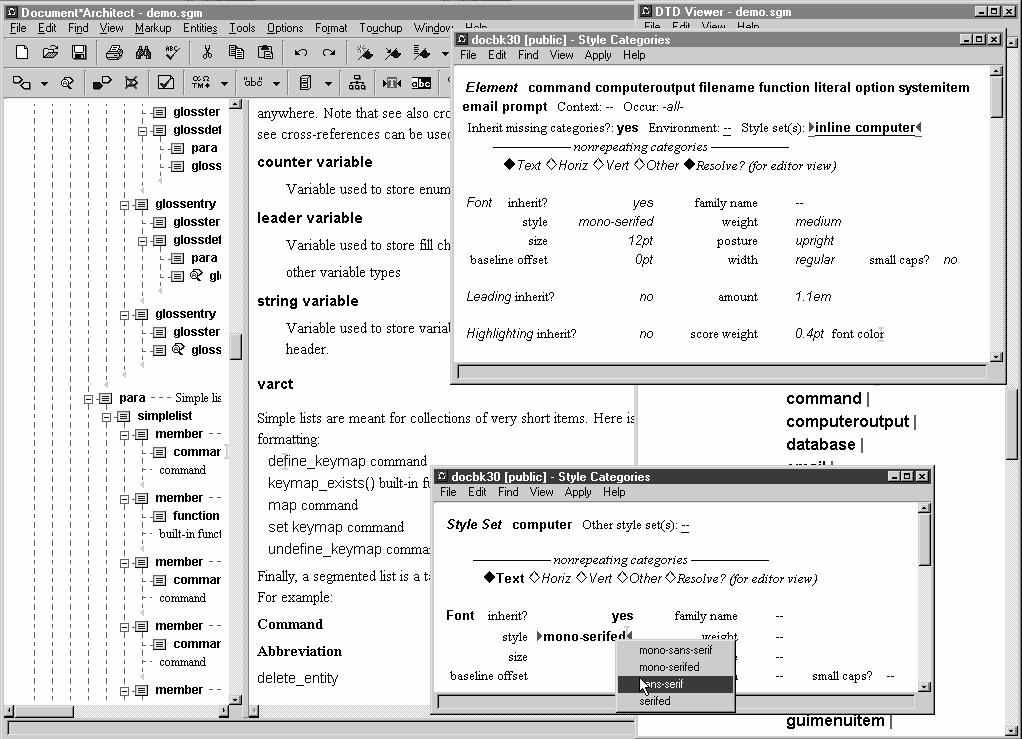ADEPT ✗
The Arbortext editor is perhaps the best-known industrial SGML and XML editor. It was (is) a very large suite, including the Document Architect program for compiling DTDs and FOSI stylesheets, and Publisher which output typeset-quality formatting (printing from the editor itself was more office-quality). Setting up the suite takes a long time, especially if many custom DTDs and stylesheets need to be installed: this is not a simple editor but a fairly complete document production system — the Author/Editor and Panorama Publisher setup had similar capabilities, but the editor could also be installed and running in a few minutes, which is not the case with ADEPT. It was also expensive: in 1992, the present author was quoted $5,000 per seat and no discounts.
Figure 1. ADEPT showing the Insert Element dialog (left); and editing mathematics (right)

A strong feature ofADEPT was mathematics (in an earlier incarnation, Arbortext also sold a commercial version of TeX, and the TeX engine remained inside their products for many years). The graphical interface to mathematical editing (see Figure 1, “ADEPT showing the Insert Element dialog (left); and editing mathematics (right)”) was a de facto industry standard which was only challenged by LyX and more recently Word’s Equation Editor.
As with Author/Editor and RulesBuilder, the principle was to separate the business of editing — the job of professional technical writers — from the business of maintaining the DTDs, many of which were from industrial vertical markets and subject to strict data controls over who could change what and when and how. One interesting approach, not seen in any other product of the era, was that after a DTD was successfully compiled for the first time, the system would ask for the element type names used for:
the document title, title block, and title page
normal paragraphs
graphics, and attribute names for assorted graphical manipulation features
divisions (chapter, section, subsection, etc)
lists (numbered/bulleted/definition)
figure blocks and page breaks
This was then used to construct an initial FOSI stylesheet so that when a new instance of the document type was created or opened, it would at least be styled with the basic structure rather than presented as an amorphous slab of markup and text. The stylesheet could then be edited to refine the formatting (see Figure 2, “Document Architect creating styles for a document type”): the styling interface was comprehensive but required substantial training to use.
Figure 2. Document Architect creating styles for a document type
